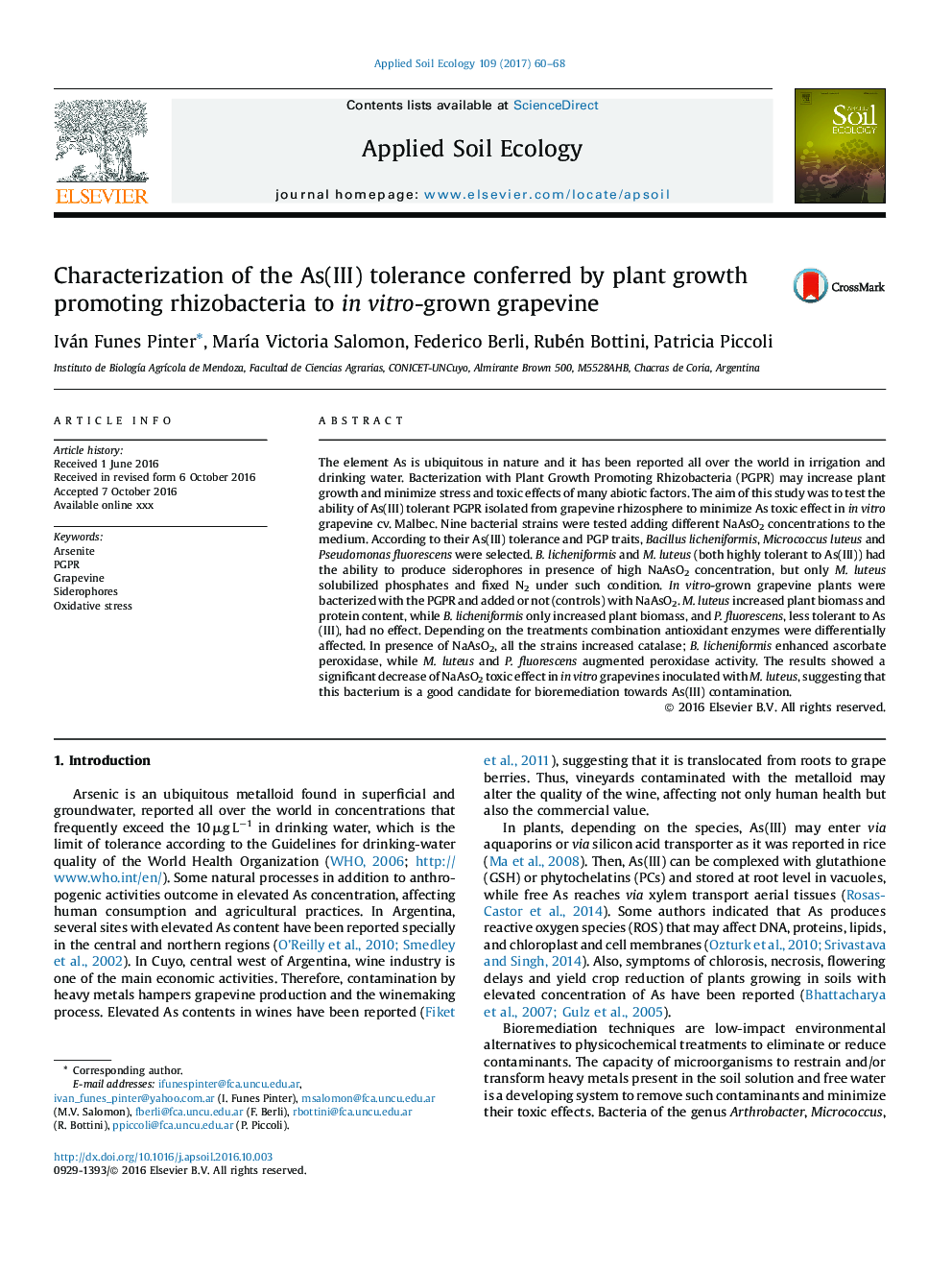| Article ID | Journal | Published Year | Pages | File Type |
|---|---|---|---|---|
| 4381770 | Applied Soil Ecology | 2017 | 9 Pages |
•Resistant PGPR produce siderophores, solubilize phosphate and fix N2 in As presence.•Grapevine bacterization with PGPR in As(III) condition increase antioxidant activity.•Among selected PGPR, M. luteus decreased As(III) toxic effect in in vitro grapevine.•M. luteus increases biomass and proteins to counteract As(III) toxicity.•A new CAS assay was evaluated to determine siderophores production.
The element As is ubiquitous in nature and it has been reported all over the world in irrigation and drinking water. Bacterization with Plant Growth Promoting Rhizobacteria (PGPR) may increase plant growth and minimize stress and toxic effects of many abiotic factors. The aim of this study was to test the ability of As(III) tolerant PGPR isolated from grapevine rhizosphere to minimize As toxic effect in in vitro grapevine cv. Malbec. Nine bacterial strains were tested adding different NaAsO2 concentrations to the medium. According to their As(III) tolerance and PGP traits, Bacillus licheniformis, Micrococcus luteus and Pseudomonas fluorescens were selected. B. licheniformis and M. luteus (both highly tolerant to As(III)) had the ability to produce siderophores in presence of high NaAsO2 concentration, but only M. luteus solubilized phosphates and fixed N2 under such condition. In vitro-grown grapevine plants were bacterized with the PGPR and added or not (controls) with NaAsO2. M. luteus increased plant biomass and protein content, while B. licheniformis only increased plant biomass, and P. fluorescens, less tolerant to As(III), had no effect. Depending on the treatments combination antioxidant enzymes were differentially affected. In presence of NaAsO2, all the strains increased catalase; B. licheniformis enhanced ascorbate peroxidase, while M. luteus and P. fluorescens augmented peroxidase activity. The results showed a significant decrease of NaAsO2 toxic effect in in vitro grapevines inoculated with M. luteus, suggesting that this bacterium is a good candidate for bioremediation towards As(III) contamination.
Graphical abstractFigure optionsDownload full-size imageDownload as PowerPoint slide
